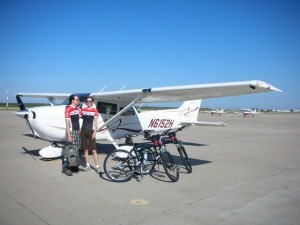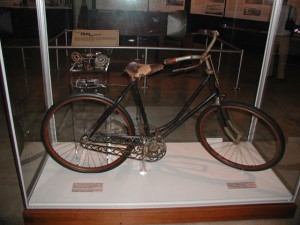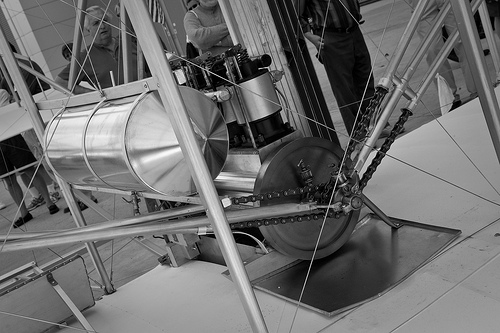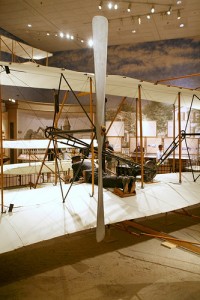One of the many wonderful features of Montague folding bicycles is that they fold up and can fit easily on public transportation, in the trunk of a car, or even on a plane. In fact, if you’re traveling by plane, whether it’s a commercial airliner or small single engine Cessna, a Montague folding bike is a great way to get around once you reach your destination.
It’s fitting that folding bikes and planes go so well together: the first time Orville Wright rode a bicycle in 1892, he shouted to his brother Wilbur, “I feel like I’m flying!” And before the Wright brothers began experimenting with kites, gliders, and engine powered aircraft, they were bicycle builders and repairmen, the owners of the Wright Cycle Company in Dayton, Ohio.
Steering in the Wright Direction
The Wright brothers’ experience with bicycles contributed to their eventual success in unlocking the key to controlled flight. By the turn of the 20th century, gliders had been around for some time, but unlike today’s planes (or even the original Wright Flyer), the path of a glider could not be controlled by the pilot. In order to control the flight path, the Wright brothers knew they would have to be able to steer. And the way they first conceived of steering an airplane was, in many respects, similar to steering a bicycle – except they had to integrate pitch (elevation of the plane’s nose) into the equation.
Winging It
The Wright brothers also tried using bicycles to test wing designs. After an unsuccessful summer experimenting on the Outer Banks of North Carolina in 1901, they returned to Dayton, but were, at first, unable to continue their research because of the irregular and weak wind in the area. In order to create a uniform, steady breeze, they tried mounting miniature versions of various wing designs to the handlebars of a bicycle. While this would, in theory, create the steady breeze required to test wing designs, it proved too difficult for the rider to take the necessary measurements while pedaling and balancing the bicycle. Ultimately, this led the brothers to create a wind tunnel to test different designs.
All Powered Up
A controllable flying machine would need more than a steering system, however. It would also have to generate its own power, enabling the pilot to fly the against the direction of the wind. In order to generate the required speed, the brothers used propellers operated by a lightweight aluminum gasoline engine, built with the help of Charlie Taylor, one of the bicycle mechanics from their shop in Dayton. They also attached the propellers to the engine using bicycle chain!
With this engine attached to their airplane design, Orville piloted the first successful flight (which lasted a total of 12 seconds) in December of 1903, near the town of Kitty Hawk, NC.
Flying with your Folding Bike
Mechanisms still found on the bicycle today helped make flying, and flying with your bicycle, possible. Have you traveled by plane with your folding bike? Do you have any trips planned? If so, we’d love to hear your story: Where did you go? How was the riding?





